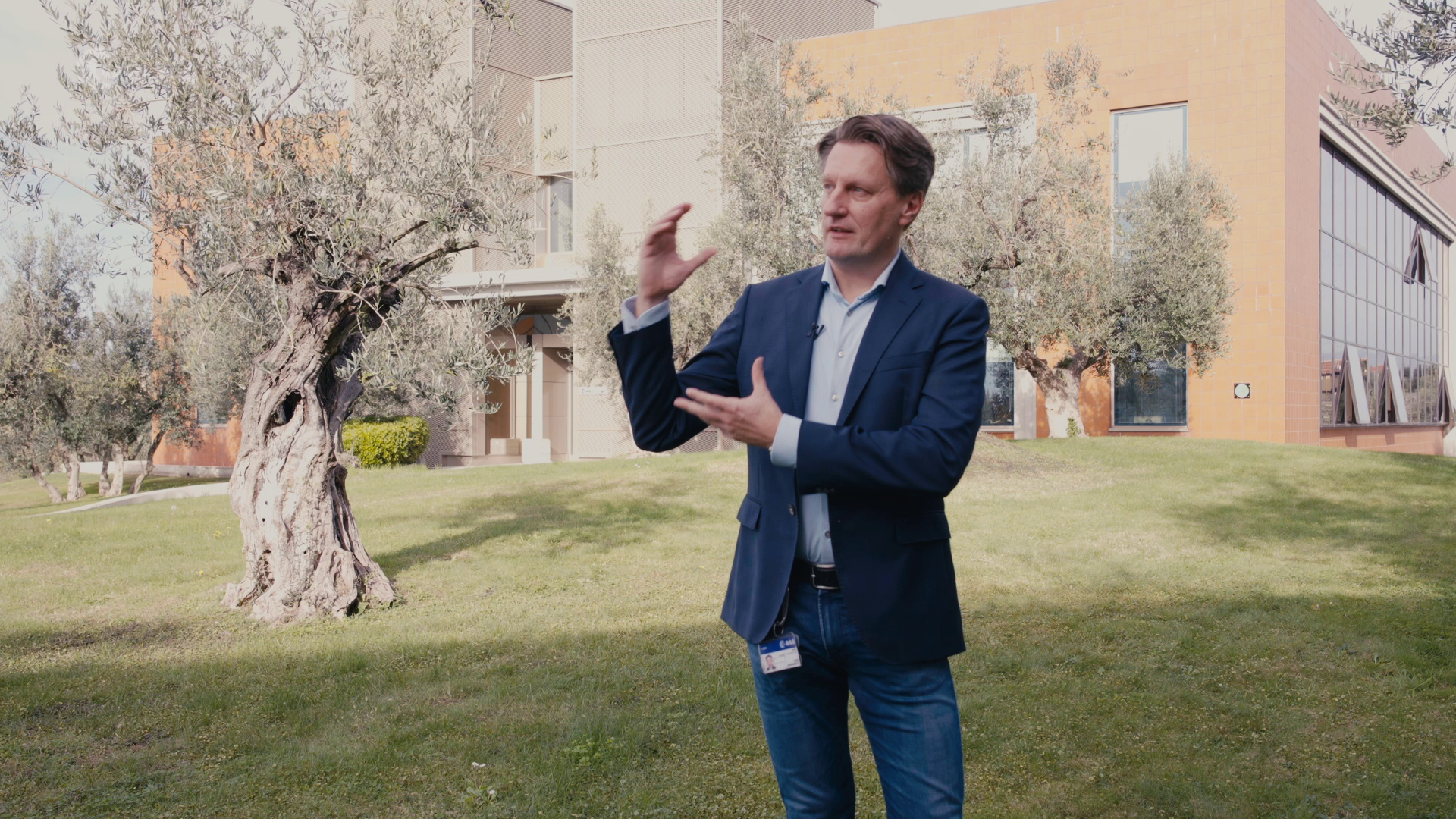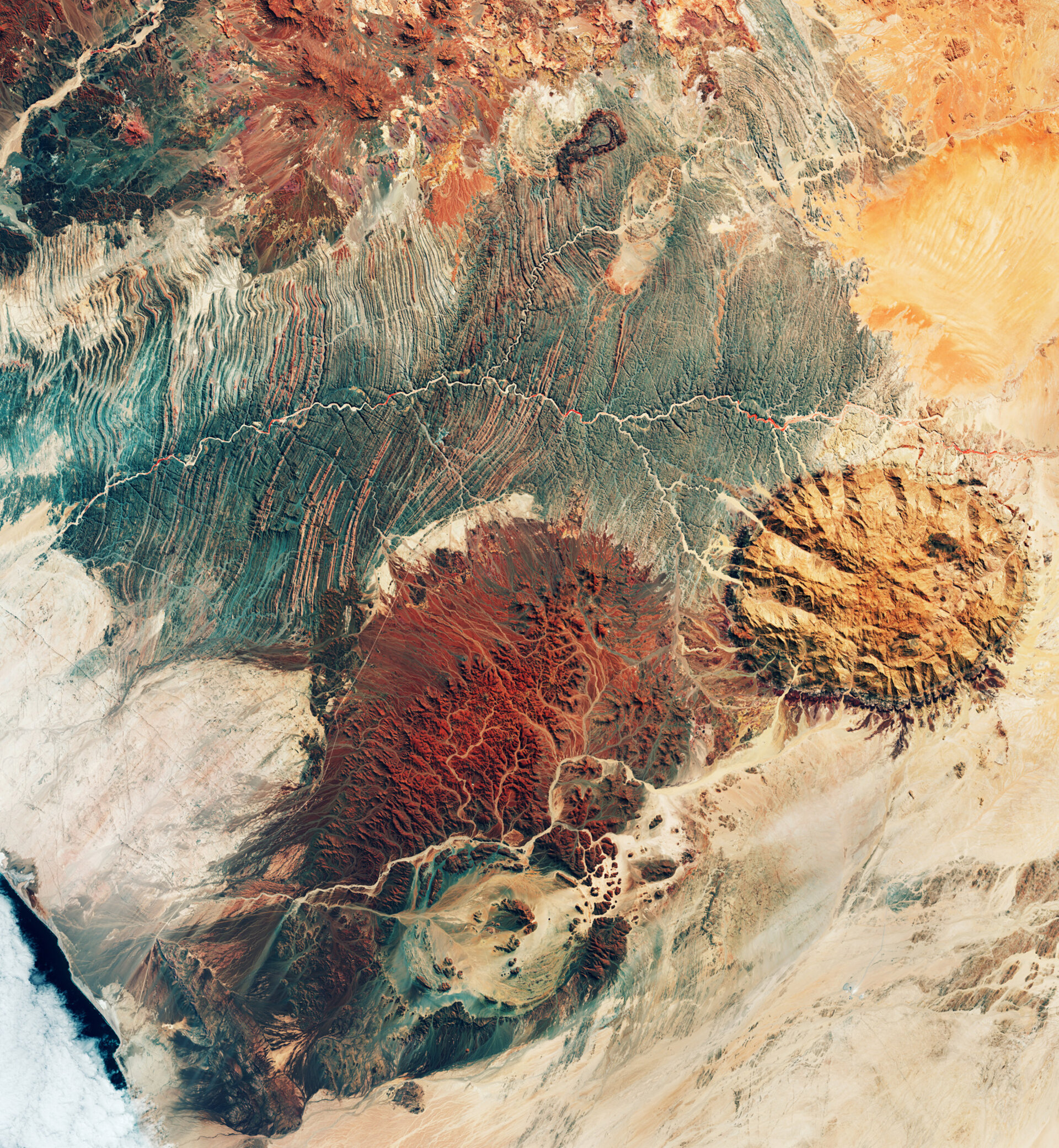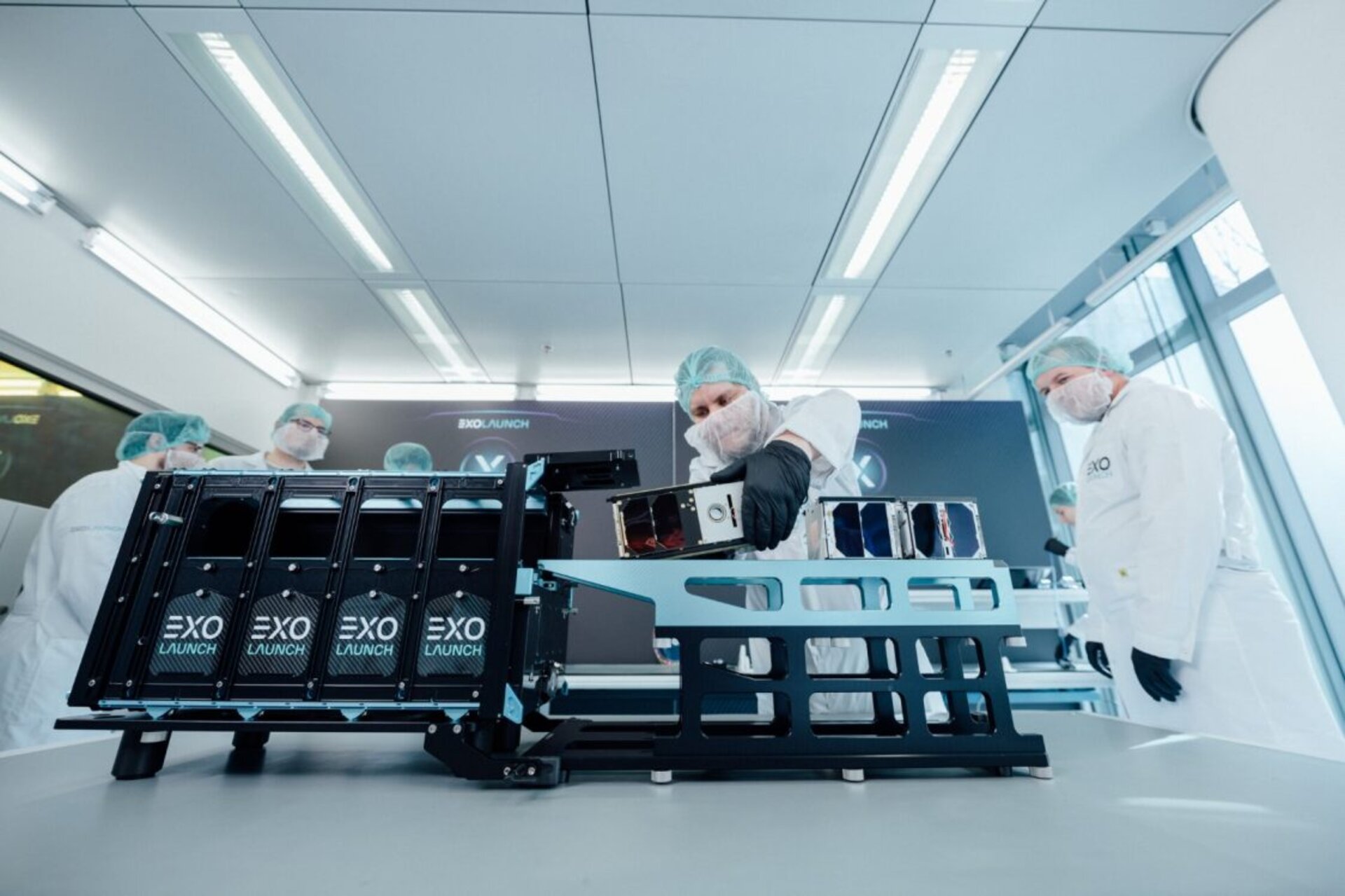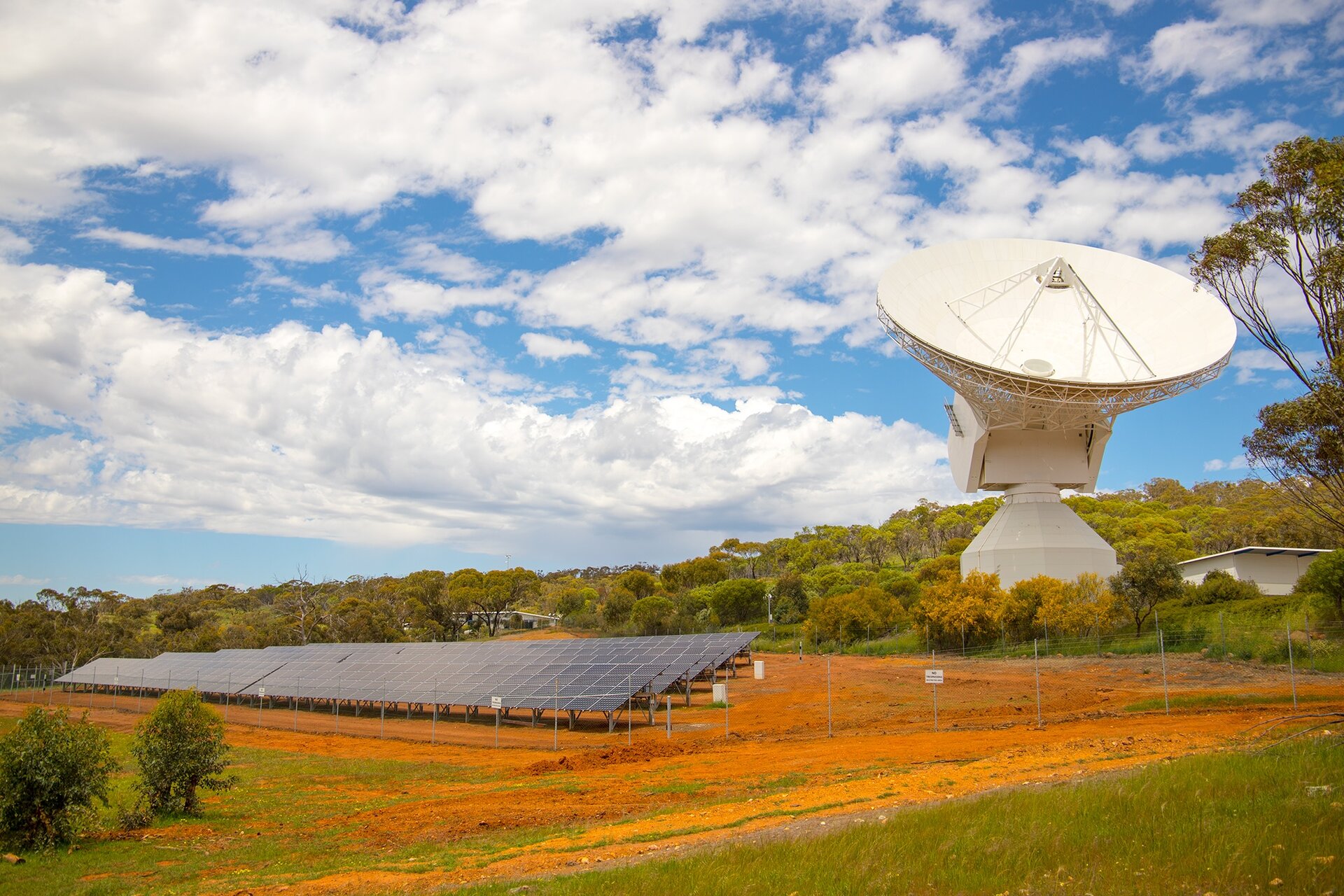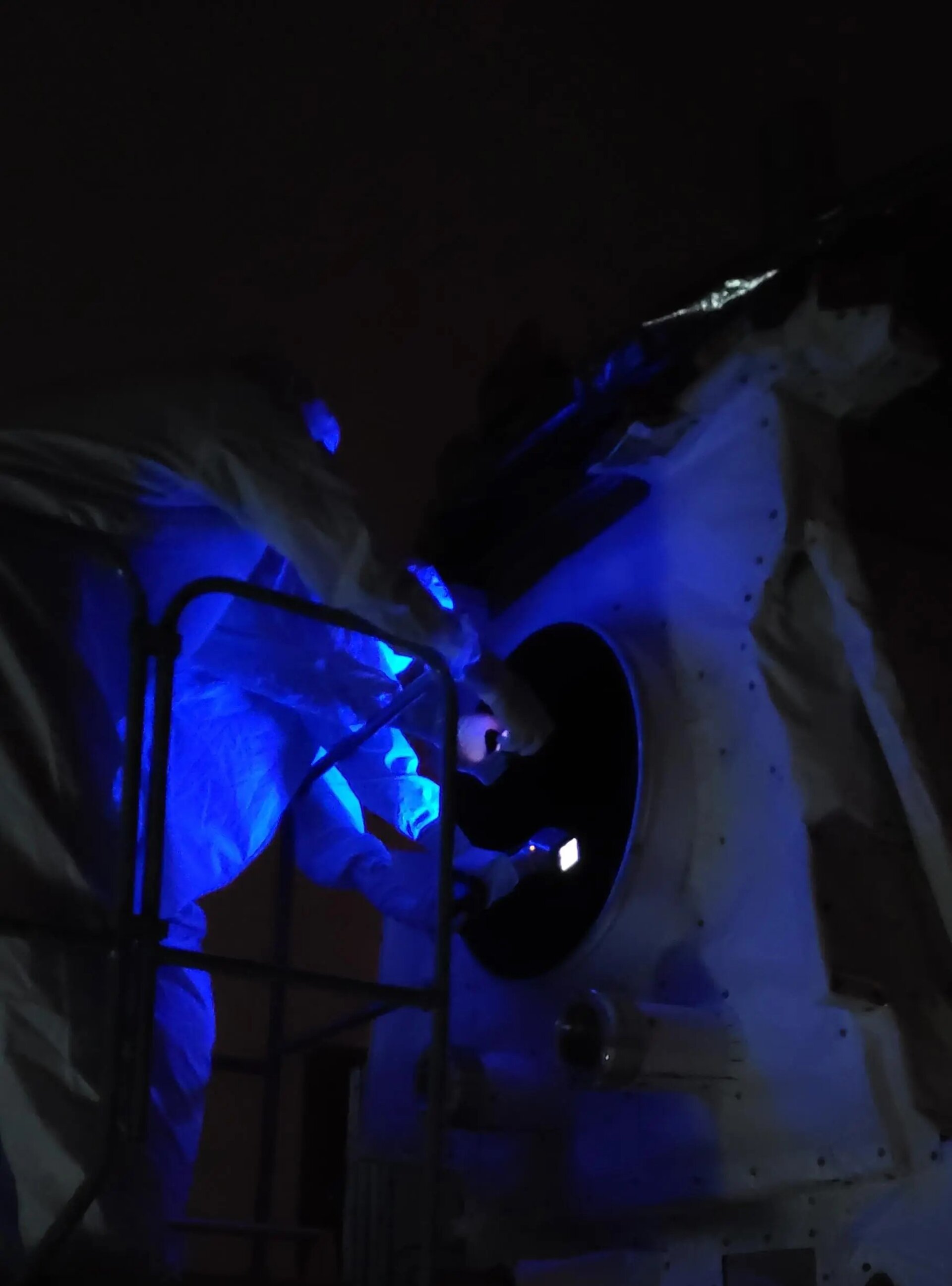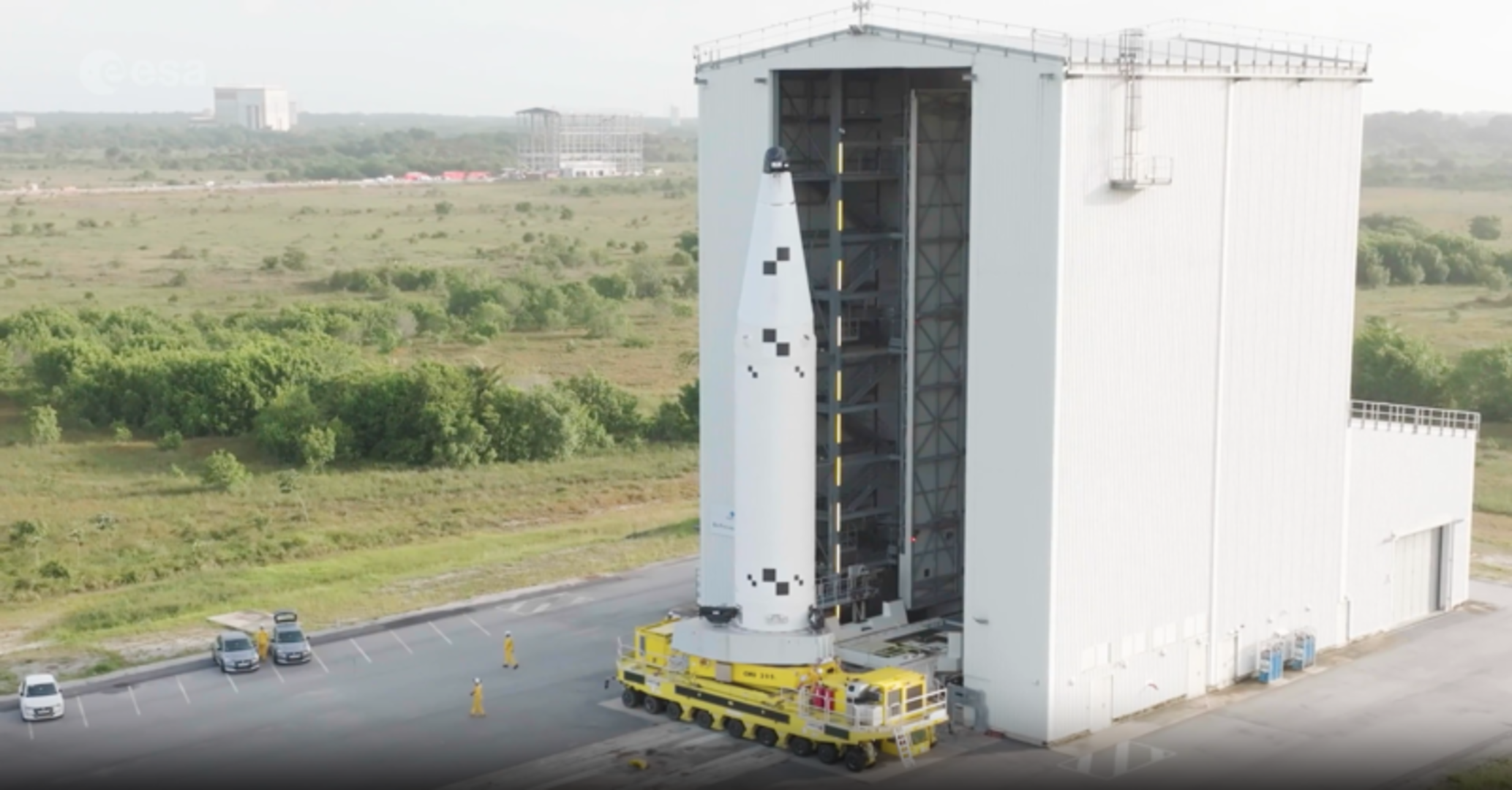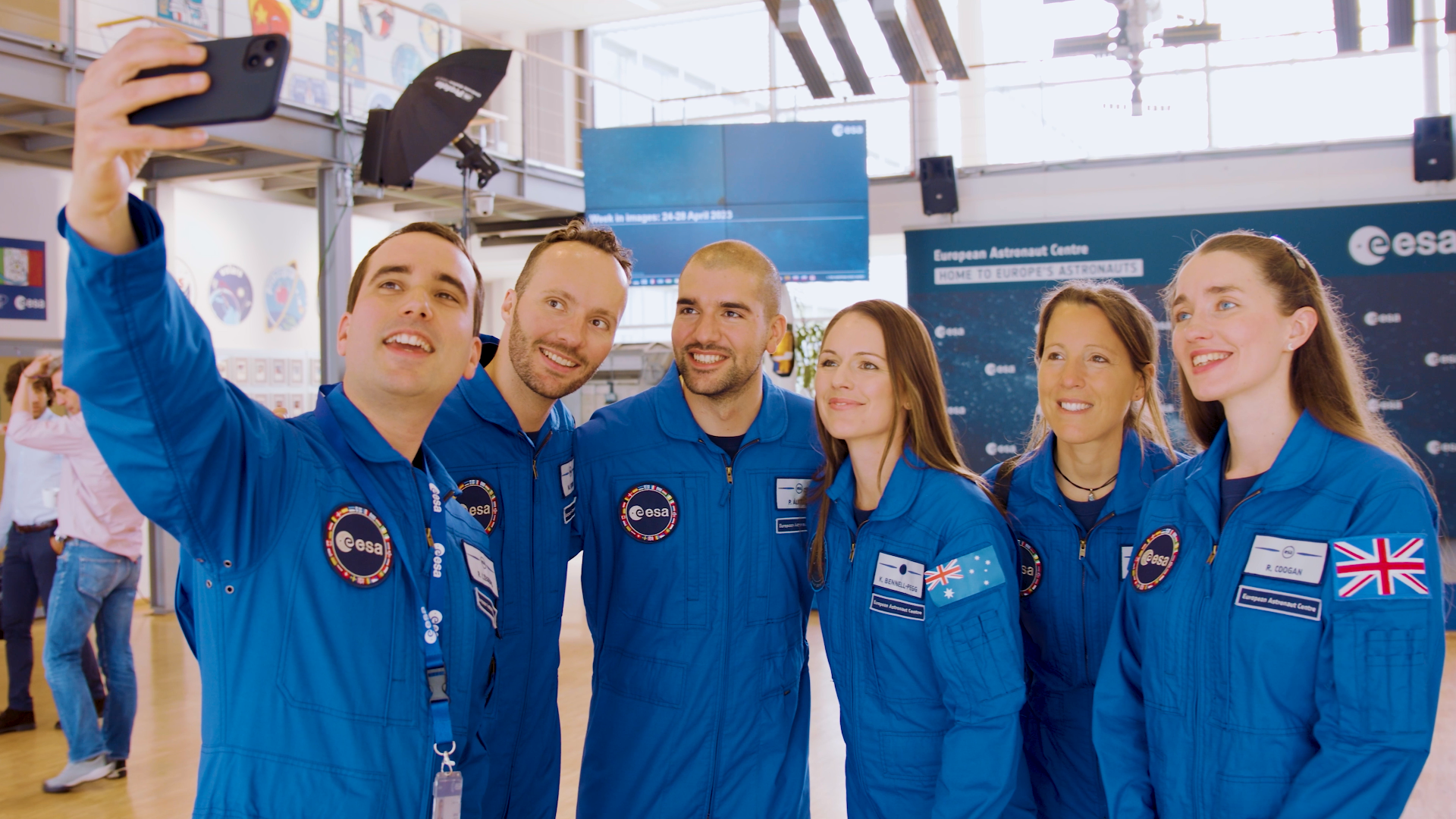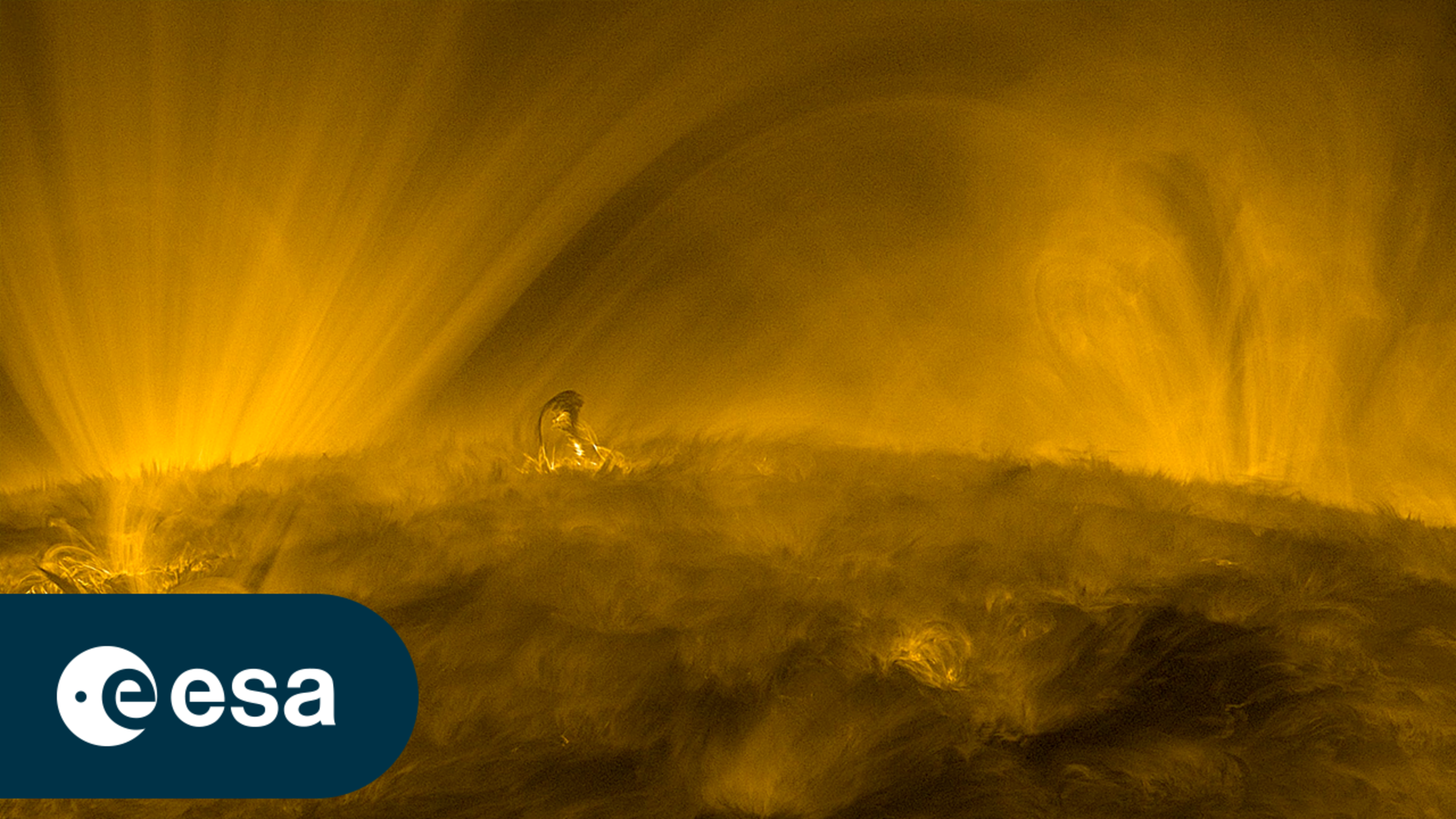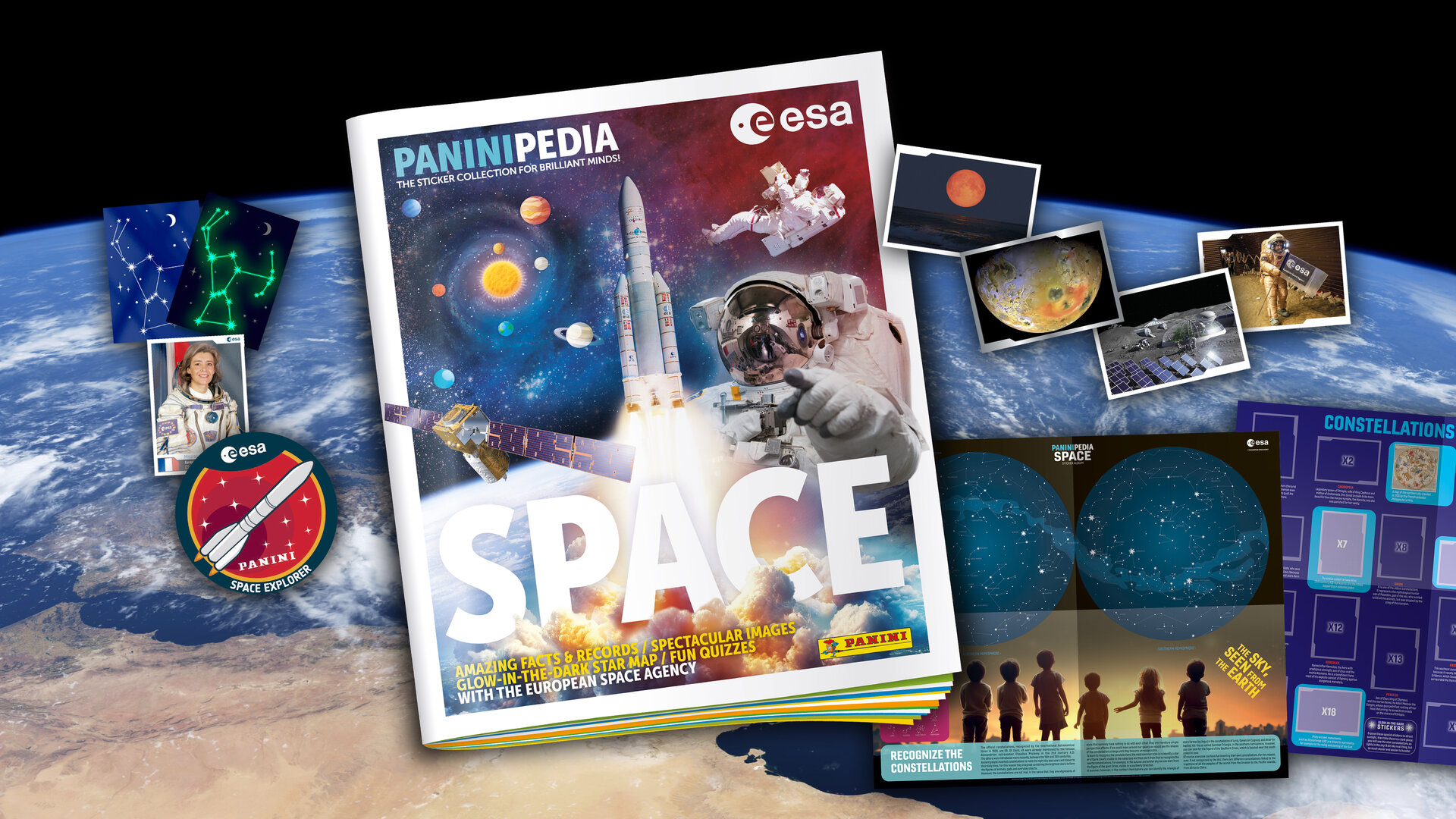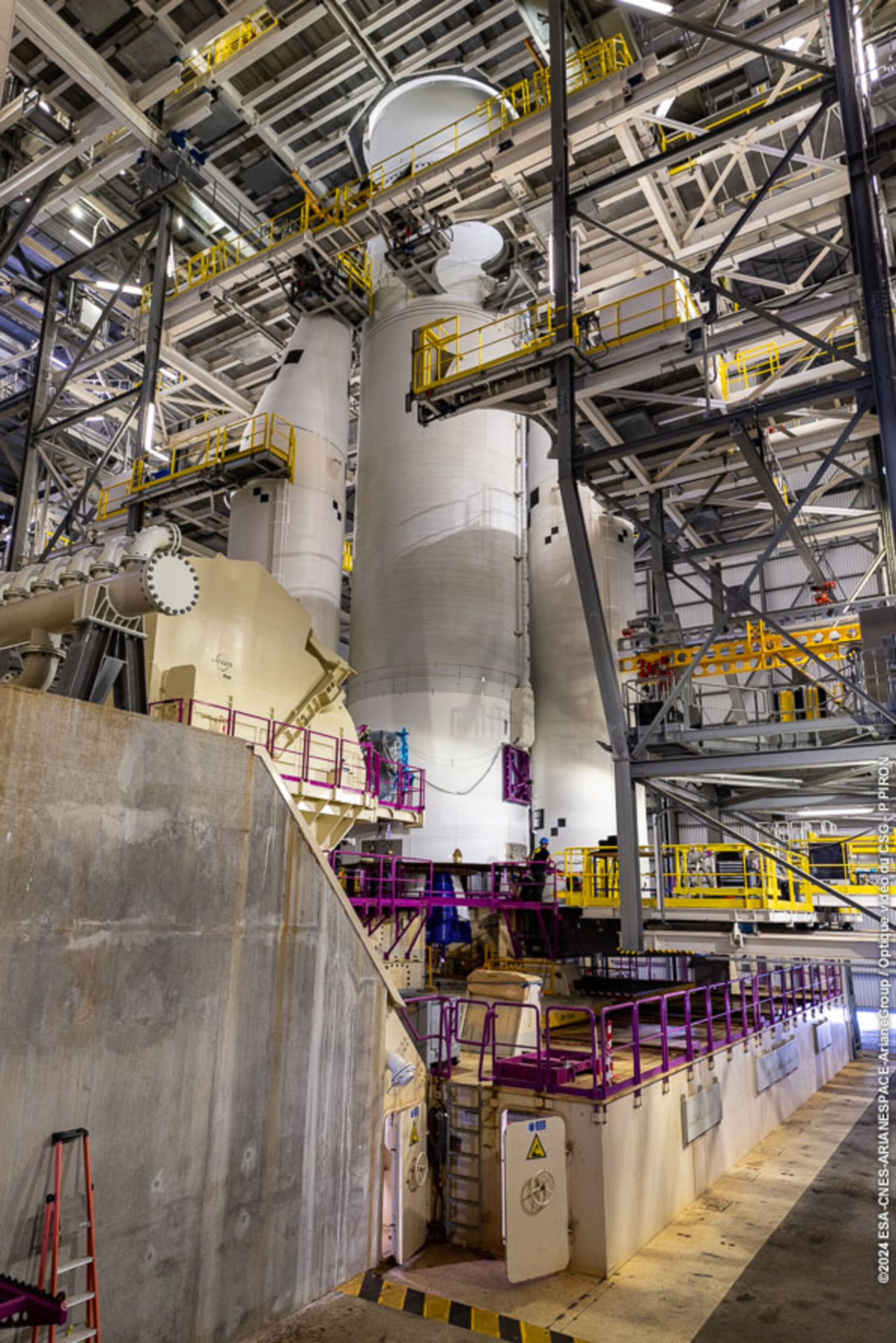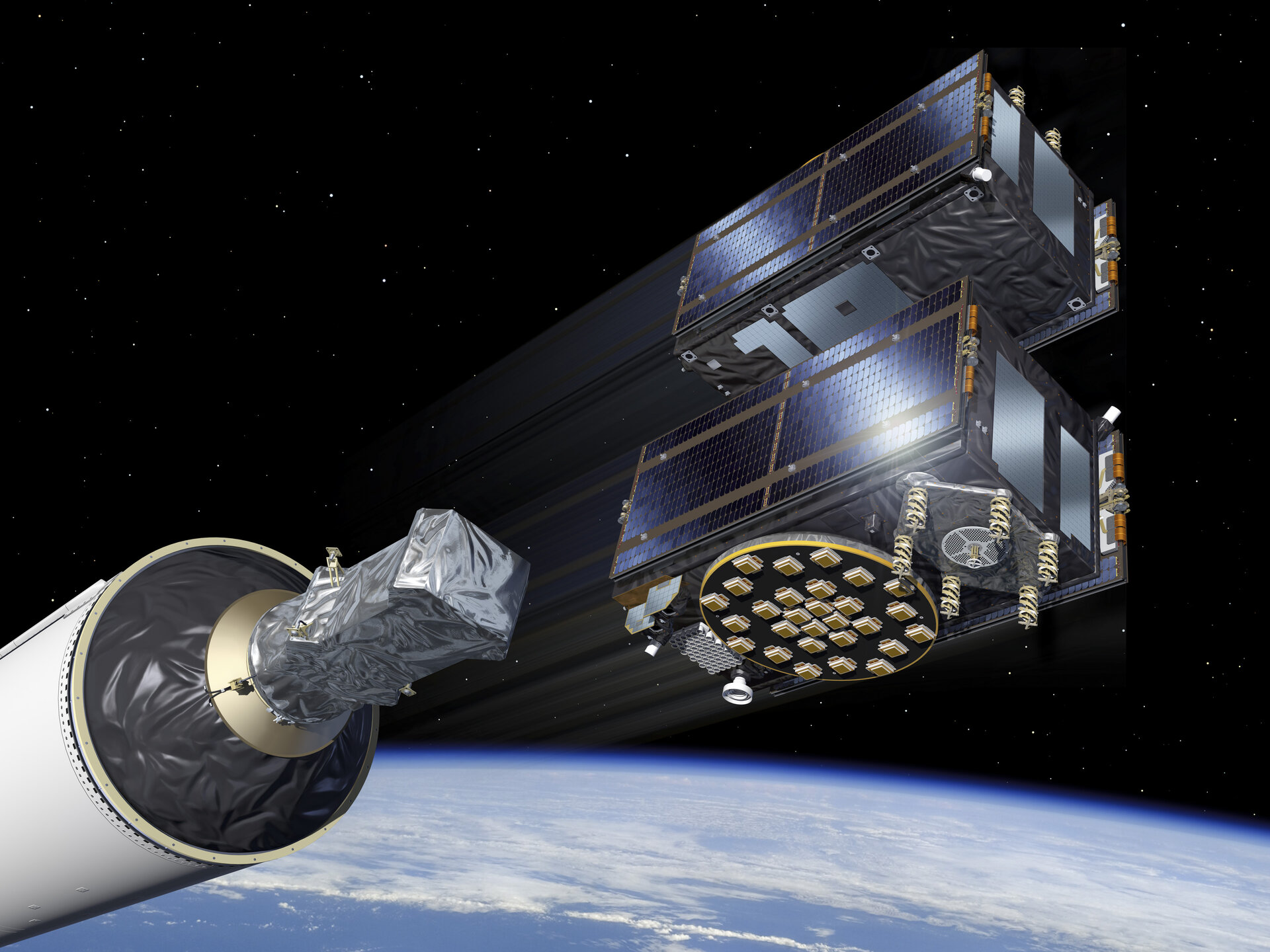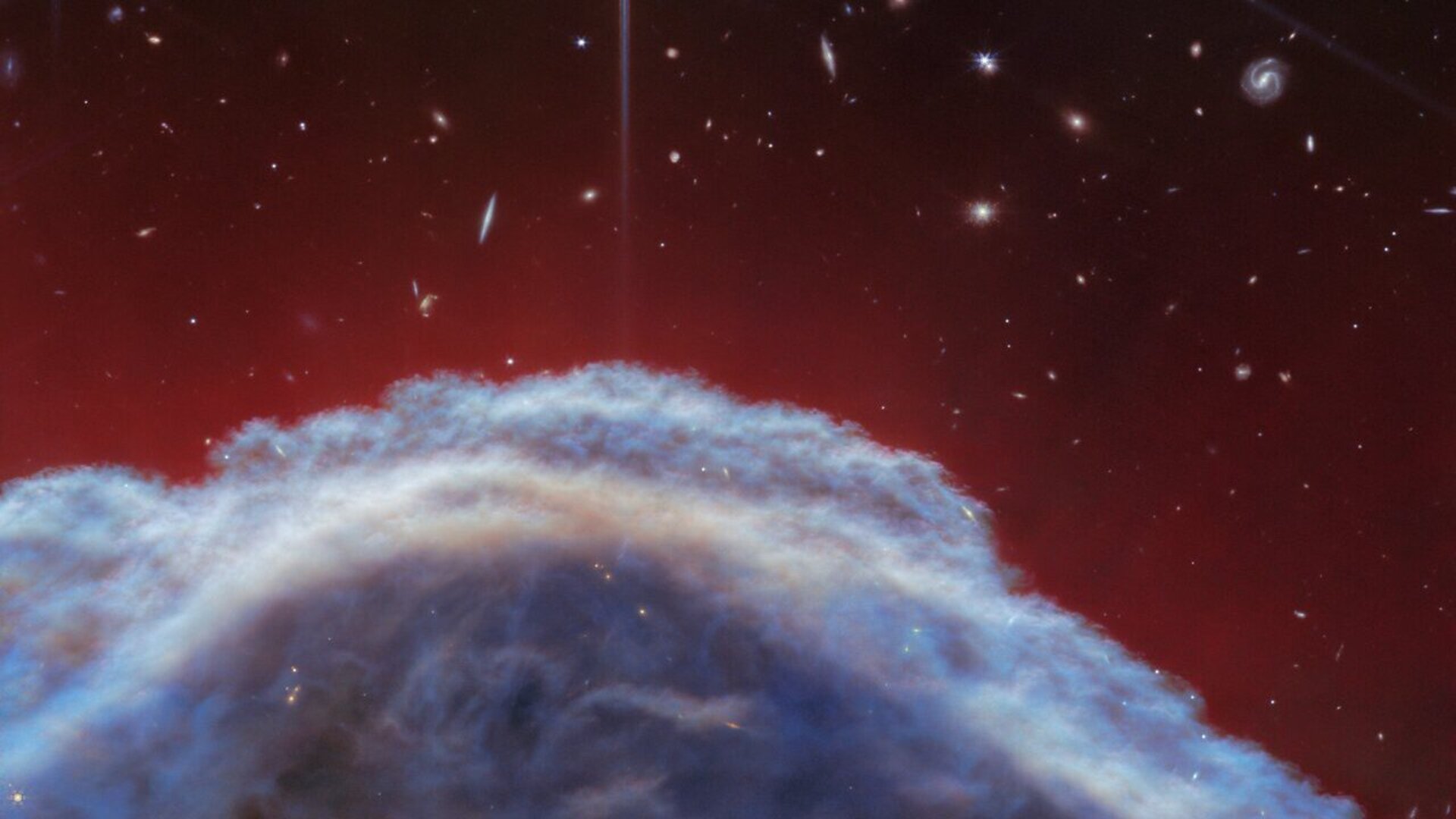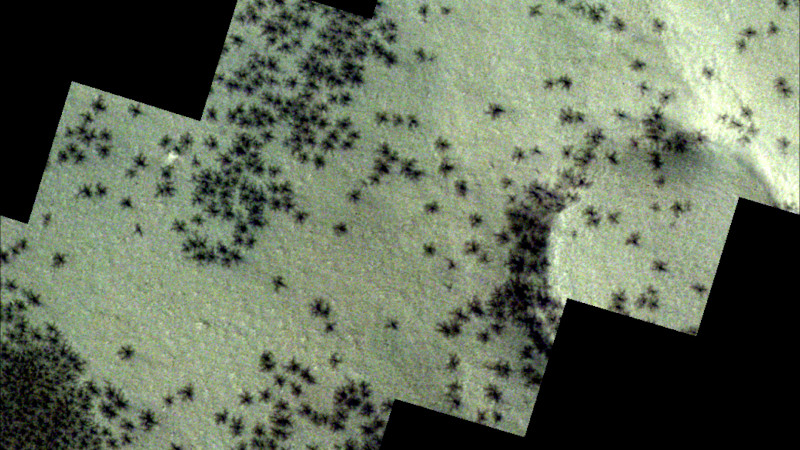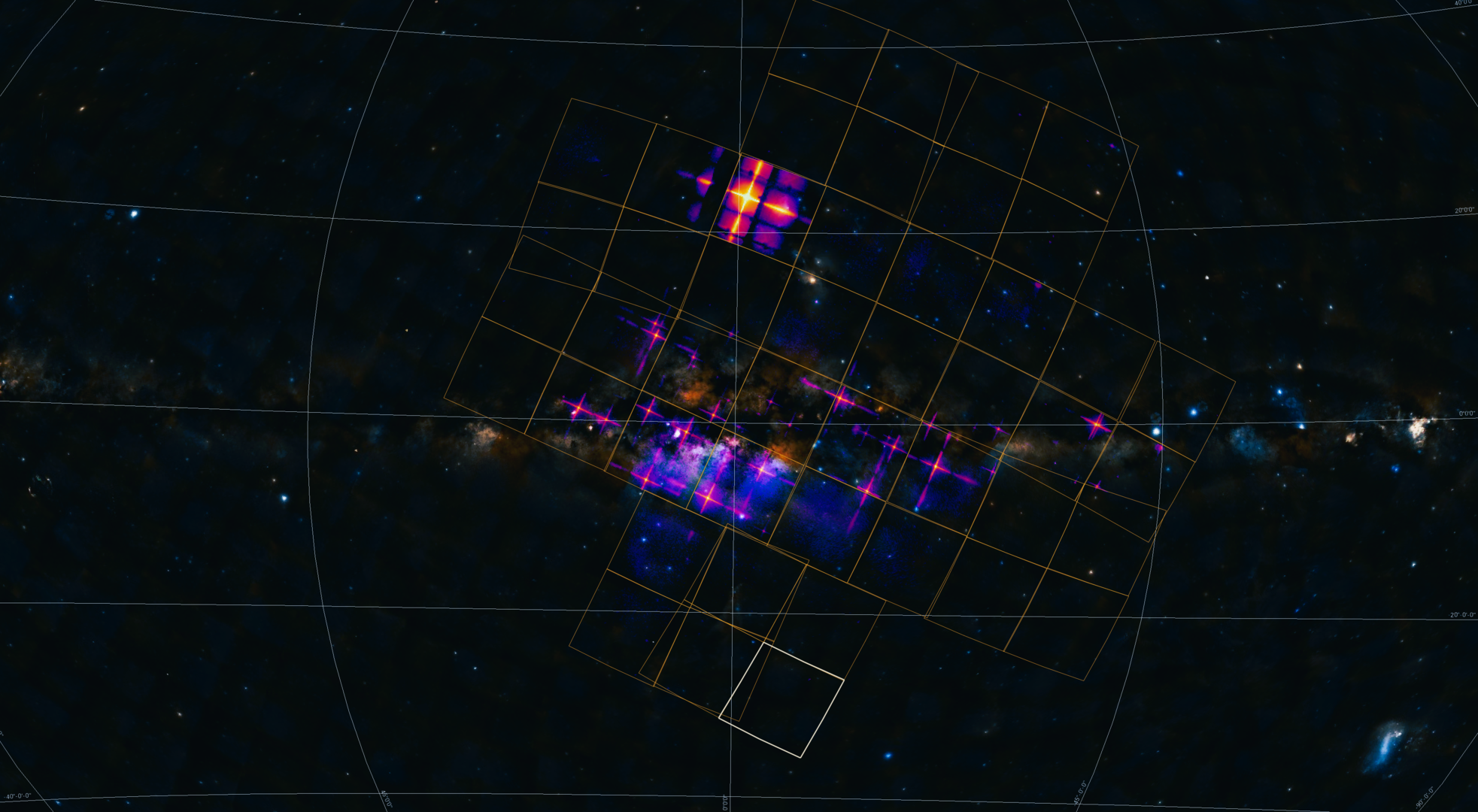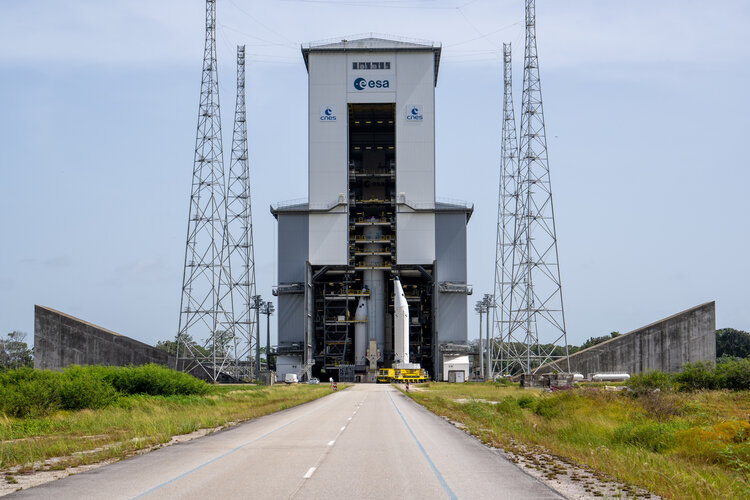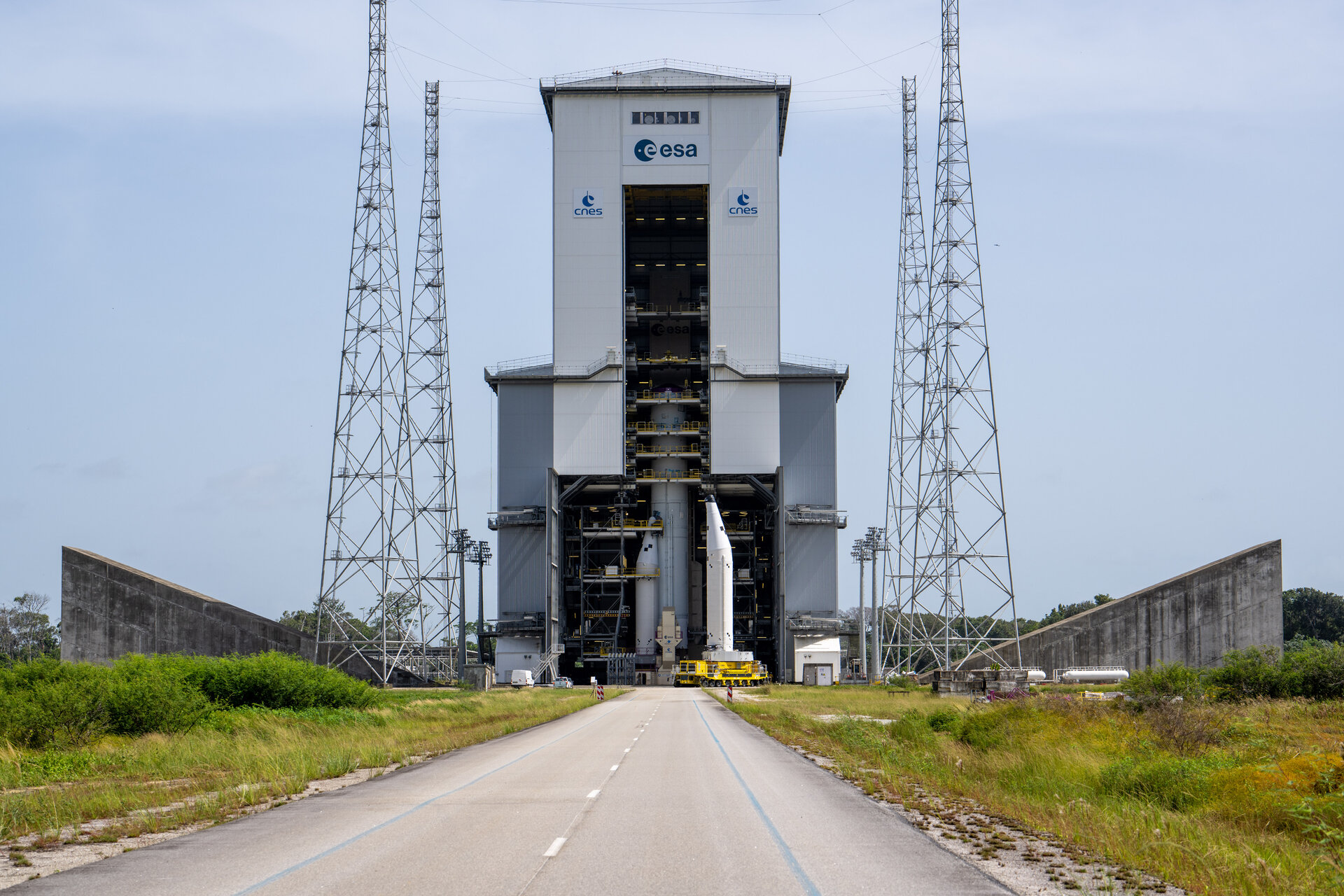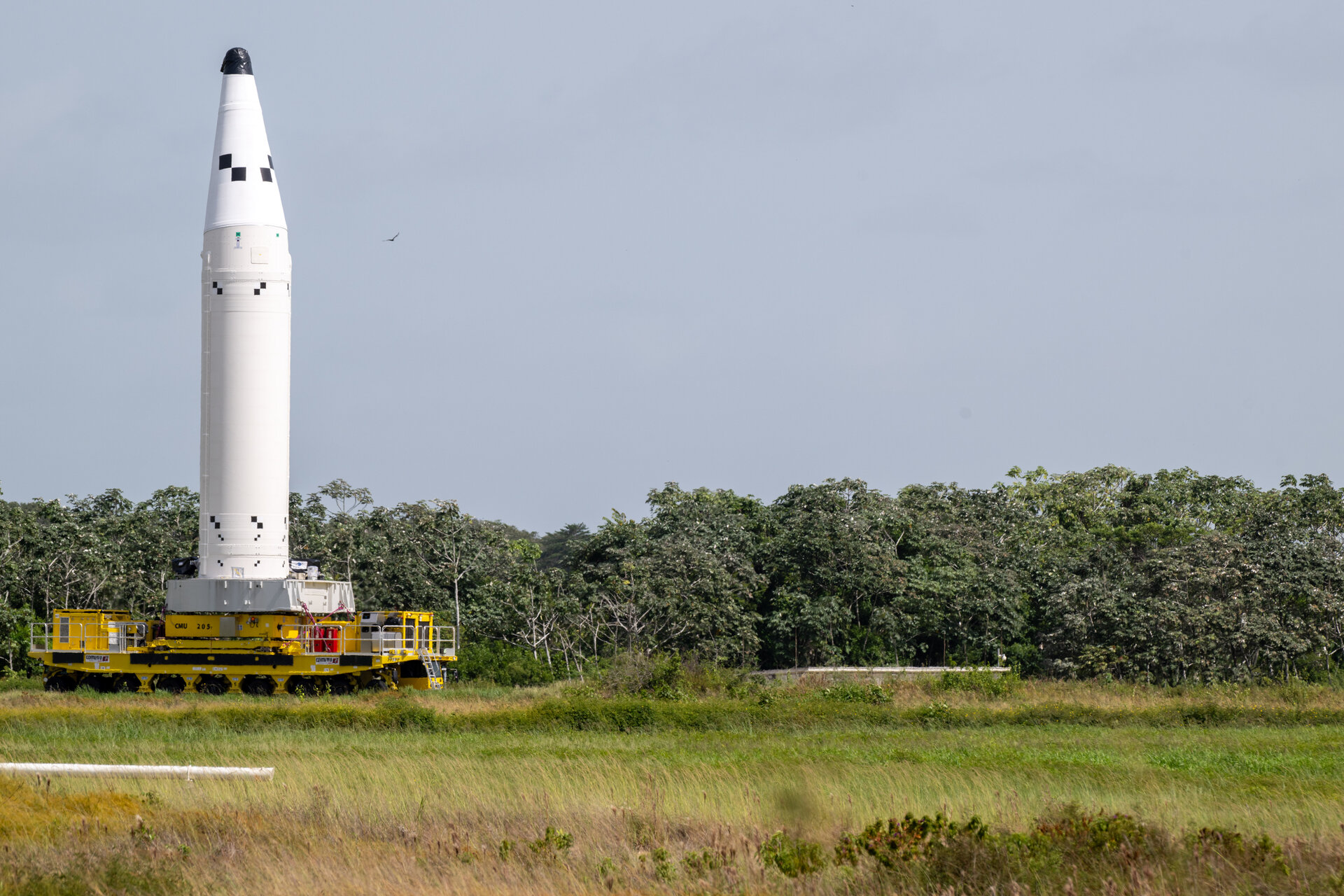#esa
Meet the team behind EarthCARE
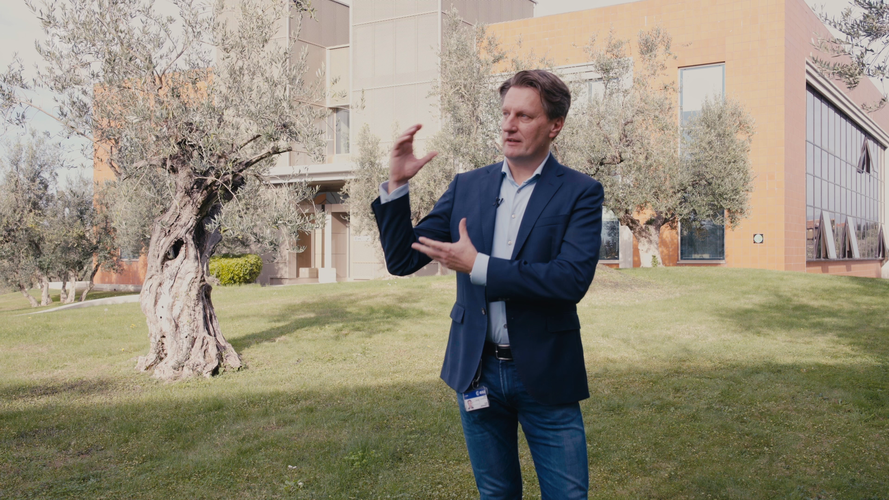
 Video: 00:04:54
Video: 00:04:54
As we approach the launch of ESA’s EarthCARE mission, we caught up with some of the scientists, engineers and experts behind the mission.
With the climate crisis increasingly tightening its grip, ESA’s Earth Cloud Aerosol and Radiation Explorer mission (EarthCARE) will shed new light on the complex interactions between clouds, aerosols and radiation in Earth’s atmosphere.
EarthCARE is the largest and most complex Earth Explorer mission. It comes at a critical time in the development of kilometre-scale resolution, global climate models and will provide an important contribution to an improved understanding of cloud convection and its role in Earth’s radiation budget.
EarthCARE is an ESA mission, but it has been developed as a cooperation between ESA and JAXA, the Japanese Space Agency.
This video features interviews with: Pavlos Kollias from Stony Brook University – McGill University, Thorsten Fehr, EarthCARE Mission Scientist at ESA, Robin Hogan, Senior Scientist at ECMWF, Dirk Bernaerts, EarthCARE Project Manager at ESA, Kotska Wallace, Mission and Optical Payload Manager at ESA, Tomomi Nio, EarthCARE Mission Manager at JAXA, Eiichi Tomita, EarthCARE/CPR Project Manager at JAXA, Ulla Wandinger, Senior Scientist at Leibniz Institute for Tropospheric Research and Bjoern Frommknecht, EarthCARE Mission Manager at ESA.
Follow the EarthCARE launch campaign blog for more updates.
Access the related broadcast quality footage:animations / interviews / satellite stock footage
#news #space #science #esa #europeanspaceagency
posted by pod_feeder_v2
Week in images: 29 April - 03 May 2024
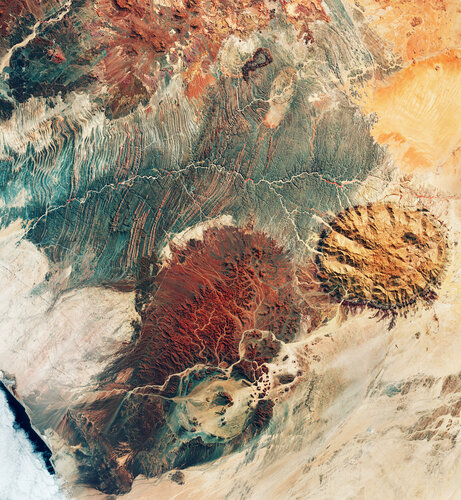

Week in images: 29 April - 03 May 2024
Discover our week through the lens
#news #space #science #esa #europeanspaceagency
posted by pod_feeder_v2
Ariane 6 launches: Exolaunch’s EXOpod Nova
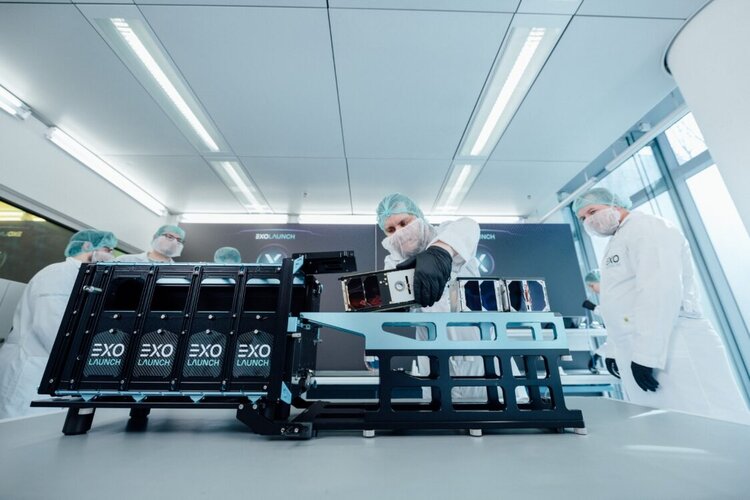

Europe’s newest rocket soon launches, taking with it many space missions each with a unique objective, destination and team at home, cheering them on. Whether launching new satellites to look back and study Earth, peer out to deep space or test important new technologies in orbit, Ariane 6’s first flight will showcase the versatility and flexibility of this impressive, heavy-lift launcher. Read on for all about EXOpod Nova, then see who else is flying first.
#news #space #science #esa #europeanspaceagency
posted by pod_feeder_v2
Seven ways ESA has cut its environmental footprint


ESA is committed to almost halve its greenhouse gas emissions linked to energy consumption by 2025 compared to 2019 levels. But how can ESA keep accelerating the use of space for the sustainable development of society while reducing its emissions?
#news #space #science #esa #europeanspaceagency
posted by pod_feeder_v2
Earth from Space: Namibian landforms

 Image: This image may resemble the surface of Mars, but it was actually captured by the Copernicus Sentinel-2 mission, revealing the stunning terrain of northwest Namibia.
Image: This image may resemble the surface of Mars, but it was actually captured by the Copernicus Sentinel-2 mission, revealing the stunning terrain of northwest Namibia.
#news #space #science #esa #europeanspaceagency
posted by pod_feeder_v2
ESA’s cloud and aerosol satellite aerosol-free
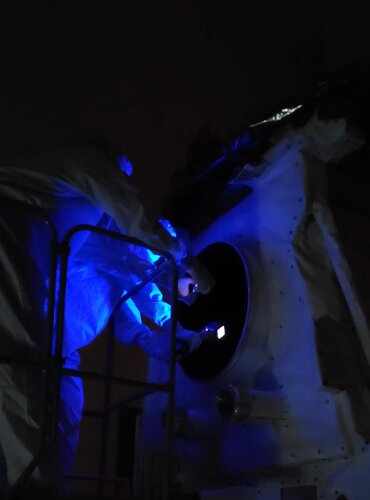

A few weeks ago, a team of engineers carefully extracted ESA's EarthCARE satellite from its protective transport container, initiating a meticulous process of inspection, testing and preparation for its liftoff later this month from the Vandenberg launch site in California.
Amidst an extensive checklist of tasks, was a rigorous effort to guarantee that the satellite is in pristine condition, underscoring the thorough attention to detail essential to making the satellite ready for launch.
#news #space #science #esa #europeanspaceagency
posted by pod_feeder_v2
Ariane 6 stands tall for launch
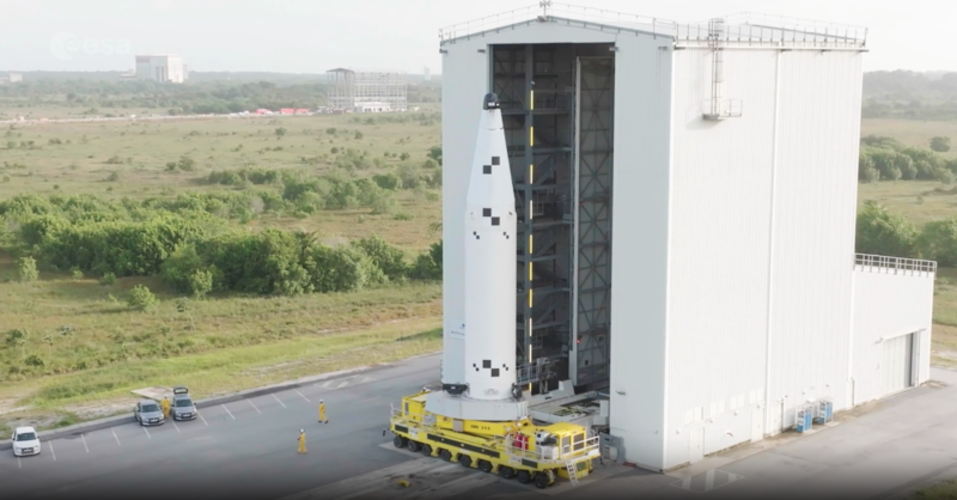
 Video: 00:02:59
Video: 00:02:59
Last week, Ariane 6’s central core – the main body of the rocket – was stood tall at the launch zone and connected to its two solid-fuel boosters. This exciting moment means only one thing: it’s the start of the first launch campaign.
The main stage and upper stage make up the core stage, and they were autonomously driven at 3 km/h from the rocket assembly building to the launch pad, 800 m away. Then lifted by a crane, the Ariane 6 core was stood upright on the launch table.
The two boosters were transported to the launch pad on a specially designed truck and then configured with the rocket body, now holding it upright.
Ariane 6 is due to launch in summer 2024. The heavy-lift rocket will inaugurate a new era of autonomous European space transportation, powering Europe into space to realise its ambitions on the world stage. It will lift off from a modern launch complex at Europe’s Spaceport in French Guiana, carrying with it not just a variety of spacecraft, but also European goals for prosperity and autonomy.
#news #space #science #esa #europeanspaceagency
posted by pod_feeder_v2
A year in training: ESA's new astronauts graduate
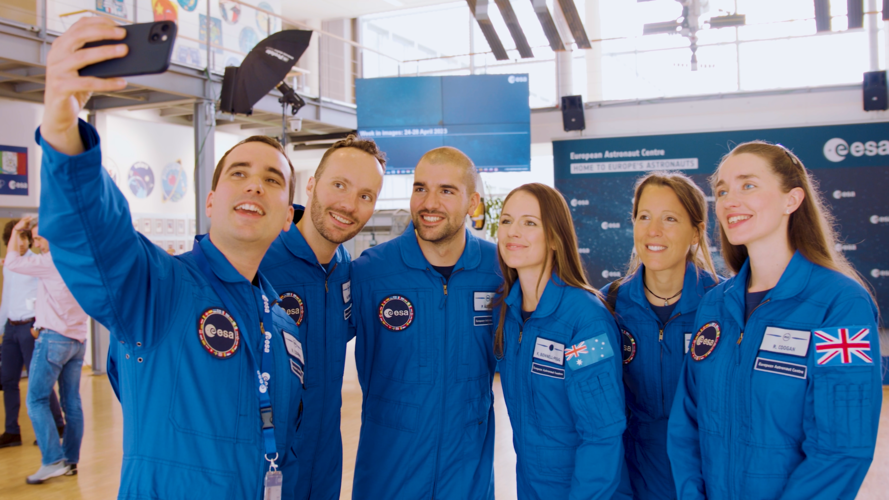
 Video: 00:05:16
Video: 00:05:16
ESA's newly graduated astronauts reach the end of one year of rigorous basic astronaut training. Discover the journey of Sophie Adenot, Rosemary Coogan, Pablo Álvarez Fernández, Raphaël Liégeois, Marco Sieber, and Australian Space Agency astronaut candidate Katherine Bennell-Pegg. Selected in November 2022, the group began their training in April 2023.
Basic astronaut training provides the candidates with an overall familiarisation and training in various areas, such as spacecraft systems, spacewalks, flight engineering, robotics and life support systems as well as survival and medical training. They received astronaut certification at ESA’s European Astronaut Centre on 22 April 2024.
Following certification, the new astronauts will move on to the next phases of pre-assignment and mission-specific training - paving the way for future missions to the International Space Station and beyond.
#news #space #science #esa #europeanspaceagency
posted by pod_feeder_v2
The Sun’s fluffy corona in exquisite detail
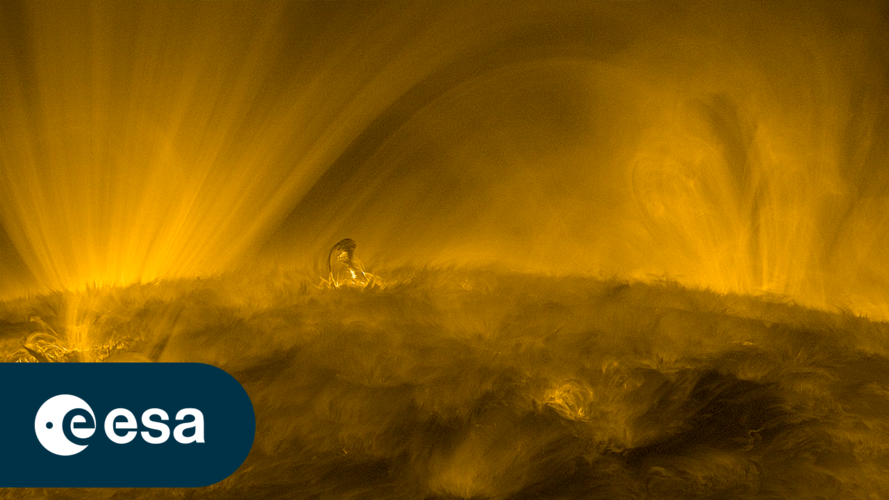
 Video: 00:00:48
Video: 00:00:48
This otherworldly, ever-changing landscape is what the Sun looks like up close. ESA's Solar Orbiter filmed the transition from the Sun's lower atmosphere to the much hotter outer corona. The hair-like structures are made of charged gas (plasma), following magnetic field lines emerging from the Sun's interior.
The brightest regions are around one million degrees Celsius, while cooler material looks dark as it absorbs radiation.
This video was recorded on 27 September 2023 by the Extreme Ultraviolet Imager (EUI) instrument on Solar Orbiter. At the time, the spacecraft was at roughly a third of the Earth’s distance from the Sun, heading for a closest approach of 43 million km on 7 October.
On the same day that this video was recorded, NASA’s Parker Solar Probe skimmed just 7.26 million km from the solar surface. Rather than directly imaging the Sun, Parker measures particles and the magnetic field in the Sun’s corona and in the solar wind. This was a perfect opportunity for the two missions to team up, with ESA-led Solar Orbiter’s remote-sensing instruments observing the source region of the solar wind that would subsequently flow past Parker Solar Probe.
Spot the moss, spicules, eruption and rain
Lower left corner: An intriguing feature visible throughout this movie is the bright gas that makes delicate, lace-like patterns across the Sun. This is called coronal ‘moss’. It usually appears around the base of large coronal loops that are too hot or too tenuous to be seen with the chosen instrument settings.
On the solar horizon: Spires of gas, known as spicules, reach up from the Sun’s chromosphere. These can reach up to a height of 10 000 km.
Centre around 0:22: A small eruption in the centre of the field of view, with cooler material being lifted upwards before mostly falling back down. Don’t be fooled by the use of ‘small’ here: this eruption is bigger than Earth!
Centre-left around 0:30: ‘Cool’ coronal rain (probably less than 10 000 °C) looks dark against the bright background of large coronal loops (around one million degrees). The rain is made of higher-density clumps of plasma that fall back towards the Sun under the influence of gravity.
[Click here for a version of this video without annotations](https://www.esa.int/ESA_Multimedia/Videos/2024/04/The_Sun_s_fluffy_corona_in_exquisite_detail-unannotated_version).
For the best possible video quality, please accept website cookies.
#space #science #esa #europeanspaceagency
posted by pod_feeder_v2
Sticker fun in space!
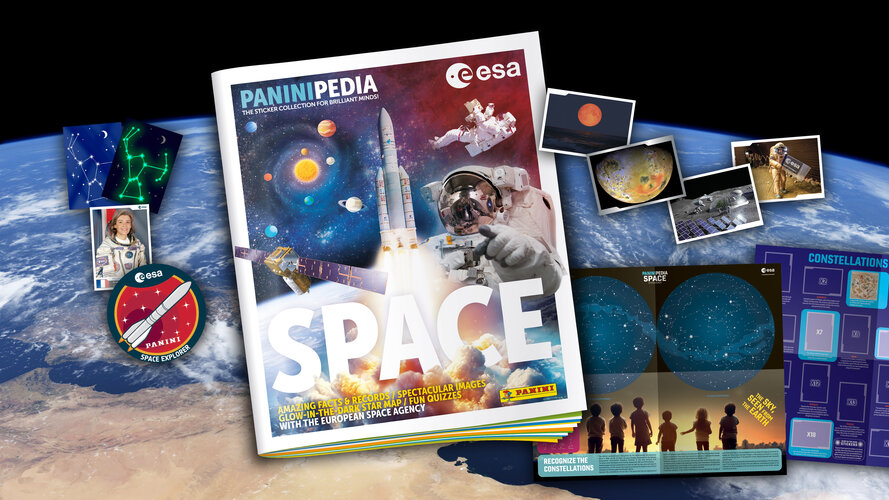

Exciting news for young space fans! PaniniPedia Space, the most complete and up-to-date sticker reference album about space, launches in France on 1 May 2024. Created by Panini in collaboration with ESA, PaniniPedia Space takes readers on a journey of discovery through our Solar System and beyond.
#news #space #science #esa #europeanspaceagency
posted by pod_feeder_v2
Ariane 6 gets its wings
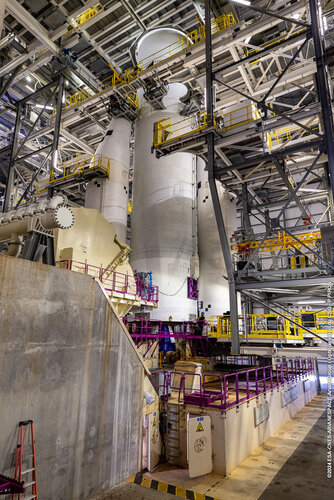
 Image: Ariane 6's boosters are connected to the rocket's central core
Image: Ariane 6's boosters are connected to the rocket's central core
#launchers #space #science #esa #europeanspaceagency
posted by pod_feeder_v2
Smiles all round: Vega-C to launch ESA solar wind mission
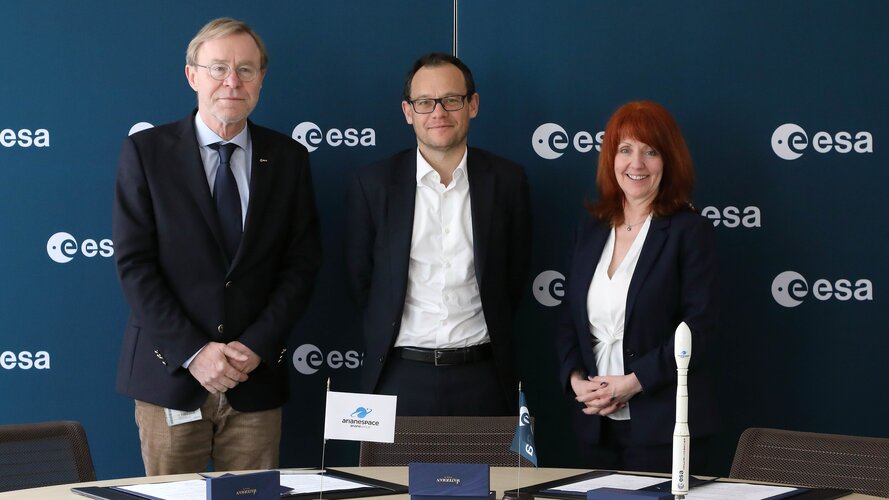

ESA ensures a ride into space for its Smile mission, with Arianespace signing up to launch the spacecraft on a Vega-C rocket
#news #space #science #esa #europeanspaceagency
posted by pod_feeder_v2
Two new satellites join the Galileo constellation
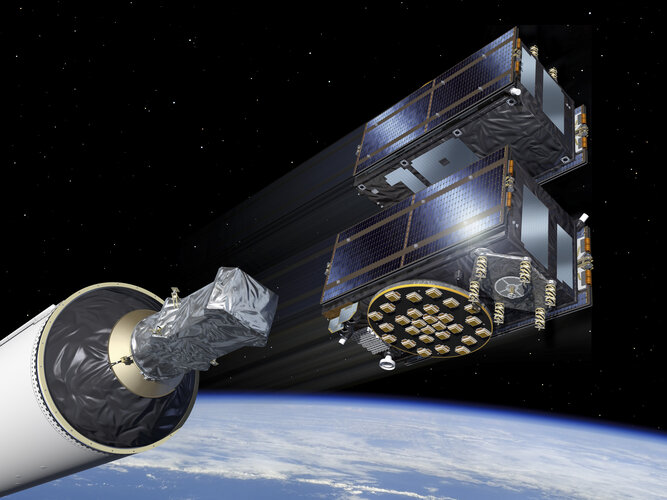

The European Galileo navigation system has two more satellites in orbit following their launch in the early morning of Sunday, 28 April, at 01:34 BST/02:34 CEST. With 30 satellites now in orbit, Galileo is expanding its constellation, increasing the reliability, robustness and, ultimately, the precision, benefiting billions of users worldwide.
#navigaton #space #science #esa #europeanspaceagency
posted by pod_feeder_v2
Webb captures iconic Horsehead Nebula in unprecedented detail
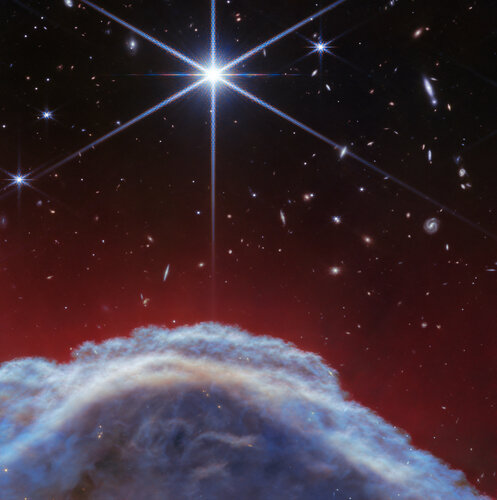

The NASA/ESA/CSA James Webb Space Telescope has captured the sharpest infrared images to date of one of the most distinctive objects in our skies, the Horsehead Nebula. These observations show a part of the iconic nebula in a whole new light, capturing its complexity with unprecedented spatial resolution.
#space #science #esa #europeanspaceagency
posted by pod_feeder_v2
Webb captures iconic Horsehead Nebula in unprecedented detail
![]()
![]() Image:
Image:
The NASA/ESA/CSA James Webb Space Telescope has captured the sharpest infrared images to date of one of the most distinctive objects in our skies, the Horsehead Nebula. The observations show a part of the iconic nebula in a whole new light, capturing its complexity with unprecedented spatial resolution.
The nebula formed from a collapsing interstellar cloud of material, and glows because it is illuminated by a nearby hot star. The gas clouds surrounding the Horsehead have already dissipated, but the jutting pillar is made of thick clumps of material that is harder to erode. Astronomers estimate that the Horsehead has about five million years left before it too disintegrates. Webb’s new view focuses on the illuminated edge of the top of the nebula’s distinctive dust and gas structure.
Read more about the new Webb's observations
This image showcases three views of the Horsehead Nebula, which resides in the constellation Orion (The Hunter), in the western side of the Orion B molecular cloud. Rising from turbulent waves of dust and gas is the Horsehead Nebula, otherwise known as Barnard 33, roughly 1300 light-years away.
The first image (left), released in November 2023, features the Horsehead Nebula as seen by ESA’s Euclid telescope. Euclid captured this image of the Horsehead in about one hour, which showcases the mission's ability to very quickly image an unprecedented area of the sky in high detail. You can learn more about this image here.
The second image (middle) shows the NASA/ESA Hubble Space Telescope’s infrared view of the Horsehead Nebula, which was featured as the telescope’s 23rd anniversary image in 2013. This image captures plumes of gas in the infrared and reveals a beautiful, delicate structure that is normally obscured by dust. You can learn more about this image here.
The third image (right) features a new view of the Horsehead Nebula from the NASA/ESA/CSA James Webb Space Telescope’s NIRCam (Near-InfraRed Camera) instrument. It is the sharpest infrared image of the object to date, showing a part of the iconic nebula in a whole new light, and capturing its complexity with unprecedented spatial resolution.
[ Image description : A collage of three images of the Horsehead Nebula. In the left image labelled “Euclid (Visible-Infrared)”, the Nebula is seen amongst its surroundings. A small box around it connects to the second image labelled “Hubble (Infrared)”, where the Nebula is zoomed in on. A portion of the Nebula’s head has another box, which leads with a callout to the third image, labelled “Webb (Infrared)”, of that area.]
#news #space #science #esa #europeanspaceagency
posted by pod_feeder_v2
Einstein Probe opens its wide eyes to the X-ray sky
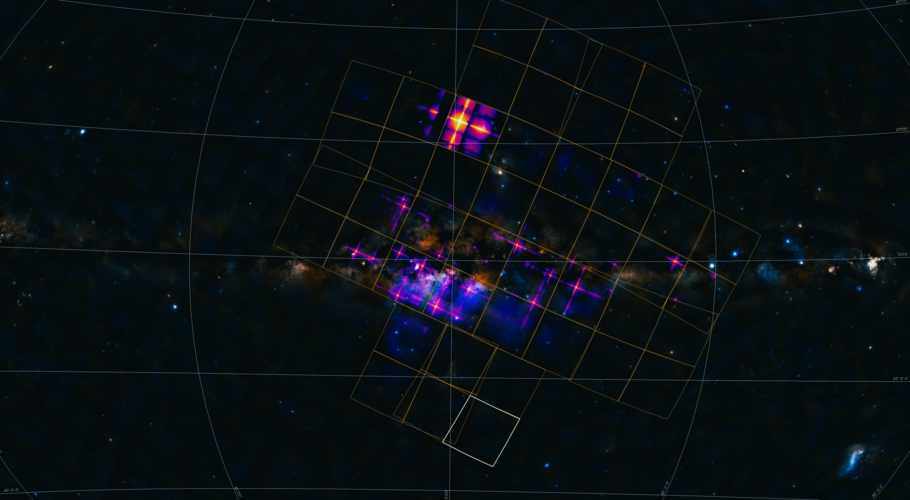

The first images captured by the innovative mission were presented at the 7th workshop of the Einstein Probe consortium in Beijing. They illustrate the satellite’s full potential and show that its novel optics, which mimic a lobster’s eyes, are ready to monitor the X-ray sky. The space X-ray telescope zoomed in on a few well-known celestial objects to give us a hint of what the mission is capable of.
#news #space #science #esa #europeanspaceagency
posted by pod_feeder_v2
Transporting second booster for first Ariane 6
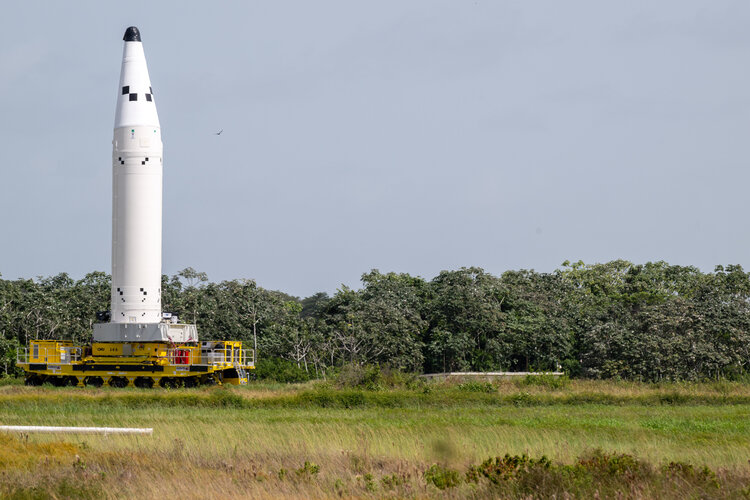
 Image: Transporting second booster for first Ariane 6
Image: Transporting second booster for first Ariane 6
#launchers #space #science #esa #europeanspaceagency
posted by pod_feeder_v2

